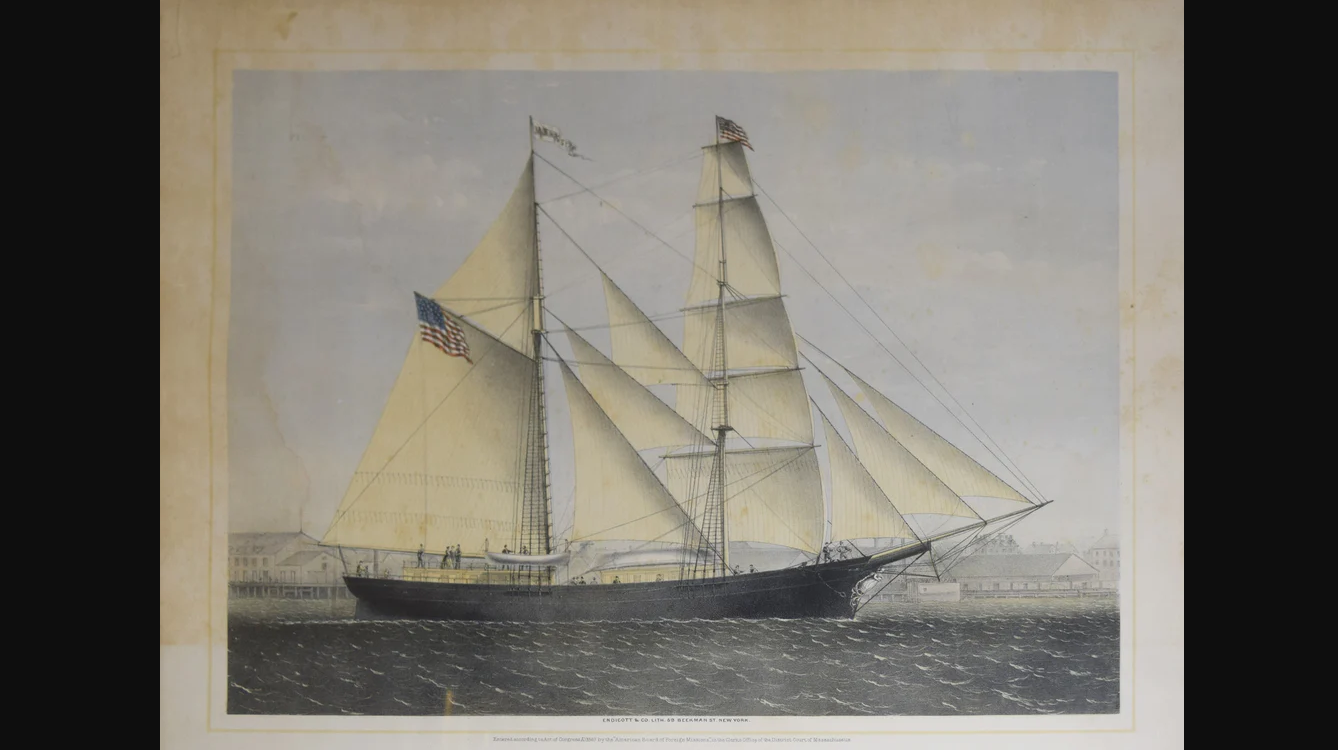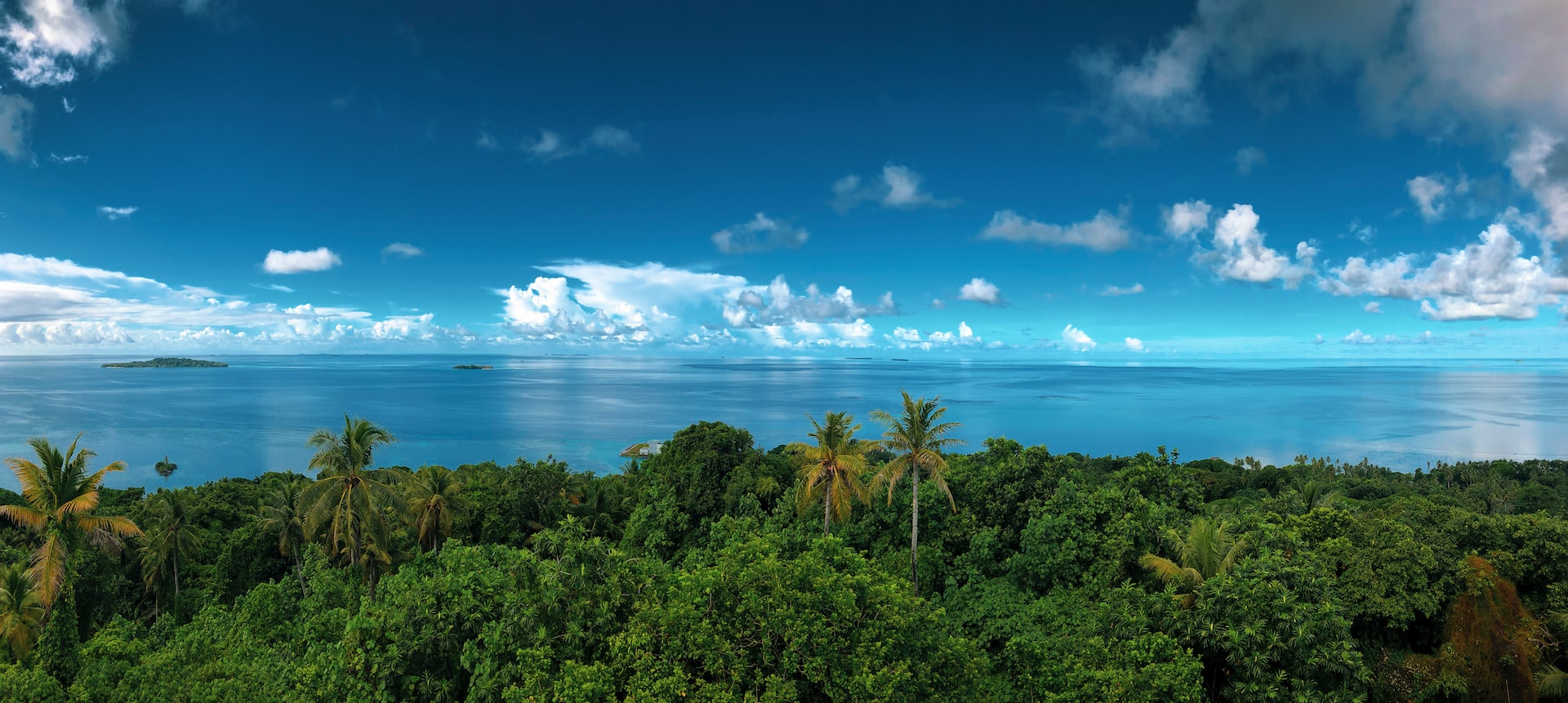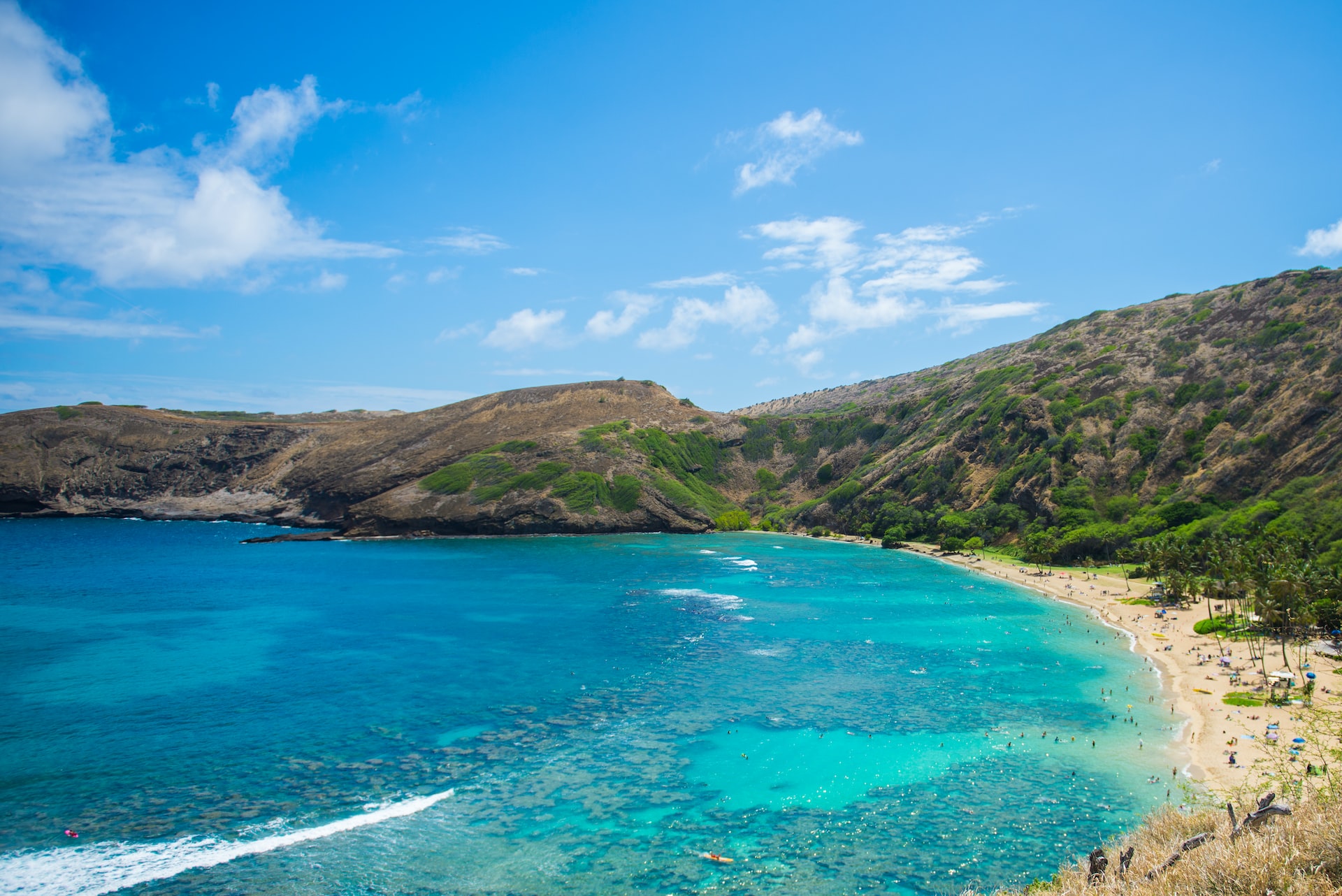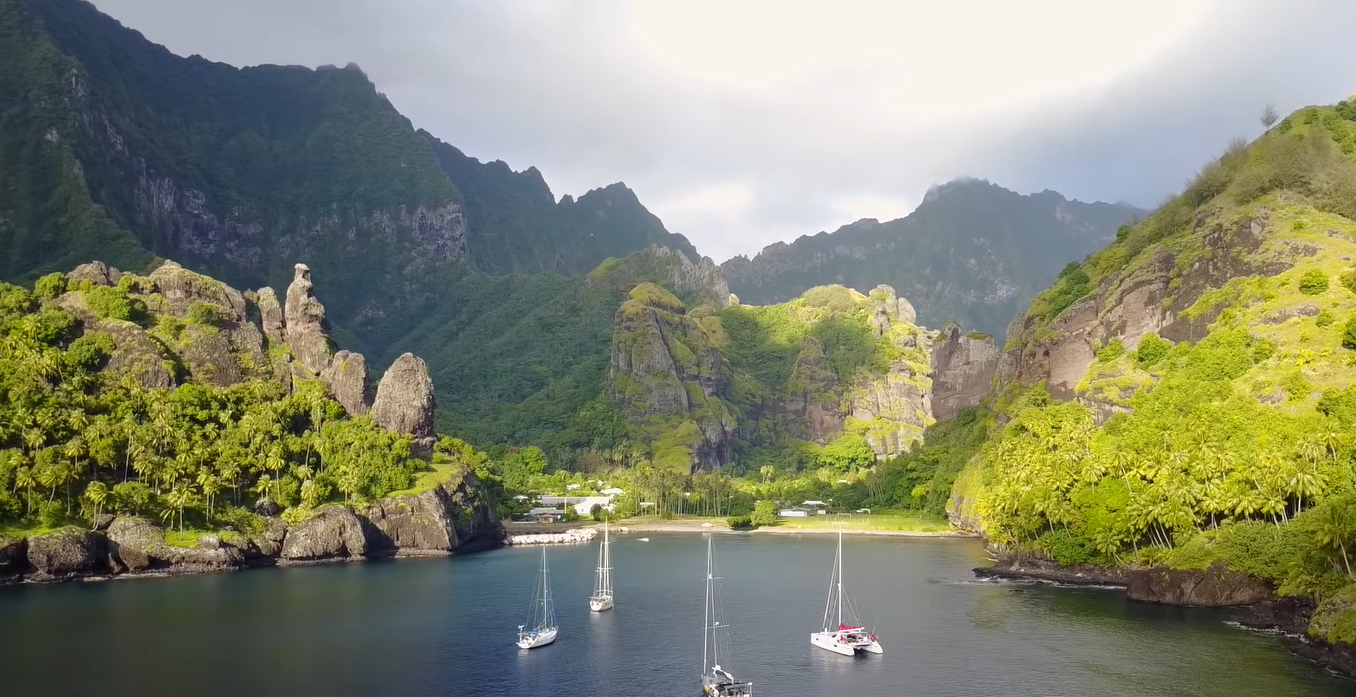Morning Star - The Vessel That Took Missionaries To Oceania
Missionaries in the early 19th century reached different parts of the world through the help of sea vessels. One of the more famous ones was the Morning Star. Like its missionary passengers, this vessel braved rough waters and tough winds just to preach the gospel to those living in far-away islands.
Author:Jane RestureOct 17, 202237.4K Shares814.6K Views

Perhaps it may be more appropriate to refer to them as vessels as in the end there were three of them all bearing the same name.
This article covers the period from 1819 to 1861 when the first Morning Star was utilized to establish a mission station on Abaiang.
The information has been based on the records of Reverend Hiram Bingham and Jane Warren.
Their records about the Morning Star are a useful window through which one can view life in Oceaniaduring this period.

The Morning Star | Episode 43 | Season 2 | Lineage
The Making Of The Morning Star
In 1819, a company of fourteen missionaries left Boston to the Sandwich Islands, and after a pleasant passage of six months, arrives safely at Honolulu.
After the King had given them leave to come on shore, some foreigners, who lived on the islands gave up three huts thatched with grass, for their use; but in them was neither floor nor ceiling, chimney nor furniture.
They were destitute likewise of furniture. When the barrel of crockery they brought with them was opened, it was found to be all broken; but the cooking stove was whole, and that was set up near one of the huts, with the fence of pole around it.
Here the ladies did their cooking, washing, and ironing, while the crowd of natives would stand about it all day to watch them work, which seemed to be very curious to them.
In order to gain easier access to all the people, the missionaries went to live on different islands. Daily intercourse with the people, as well as schools and religious teachings, in due course produce perceptible effects.
The year 1838 was emphatically a year of revivals on the islands. The year of jubilee had indeed come and the harvest which has been so long waited for was gathered.
In 1840, a written constitution and laws were adopted by the people, which secured to them their rights, encouraged industry, and punish vice.
The year 1849 completed thirty years from the commencement of the mission, with the whole number of members in the churches now being in excess of twenty-three thousand.
The people of Hawaii now felt they have received great blessing and they began to think that they ought to do something to give the gospel to others.
Nearly 2,000 miles southwest of them were several clusters of islands called the Micronesian Islands.
The Hawaiian Christians thought they would undertake to send a mission to this island and for this purpose they formed a society at Honolulu called the “Hawaiian Missionary Society.”
A vessel was chartered called the Caroline, and in July, 1850, it started on its voyage to Micronesia. It carried Reverend Messrs. Snow, Sturgess, and Gulick, with their wives, and two Hawaiian assistants with their wives.
The little company of missionaries reached their destination safely, and began their labors among the people of Micronesia.
The report, which was brought back to Honolulu, very much interested the Hawaiian Christians in the undertaking.
After a few years, they enlarged their contributions to the Hawaiian Missionary Society and determined to send two more native missionaries to Micronesia.
But these Micronesian Islands were a great way off. A year often passed, and sometimes two, without the visit of any vessel.
This that did stop were nearly all whale ships, and the captains would seldom be persuaded to go out of their course either to carry missionaries or to get the supplies to the mission.
It was concluded by the Board that a little vessel must be provided for the purpose and send out for the use of the Micronesian missions. And this was why the Morning Star was built.
The American Board then must look somewhere for the means to build the missionary vessel.
In England, they had built the mission ship John Williams using money raised by the children. It was wondered why could not other children build the ship.
Cost And Contributions
It was estimated that the vessel would cost about twelve thousand dollars.
This amount, was divided into one hundred and twenty thousand shares of ten cents each, so that a great many children could have the pleasure of being part owners in the concern.
Each one was given a certificate of stock when the money was paid.
And what was the ship to be called? It was going to bring the life of salvation to the islands in the west, rising upon them like a beautiful star. It was therefore called the Morning Star.
The money came from all directions, children from California, Oregon, and all the states of the Union sent their funds to the Board; some of their abundance, others from the depths of poverty and wants, but none willing to be left out.
Contributions were not confined to America but came also from Turkey, Syria, China and Hawaii.
The contributions to the Morning Star came into the treasury in such abundance, that notice was given that no more was needed but still the money came until it amounted to a full thirty thousand dollars.
All that was not required to building the vessel was put aside for sailing it and for repairs.
The Construction
The Morning Star was built in about twelve weeks and from the laying of the keel she was ready to be launched.
She was of one hundred and fifty tons of burden, and her form was one of great beauty.
When the day of the launching came, three or four thousand men, women, and children were assembled to see the vessel glide into the water.
Every face was full of smiles and everybody was happy.
Before she sailed on her long journey, the Morning Star was furnished with everything convenient as well as necessary. She was fitted with a spare set of sails and a spare set of spars and ropes.
When the Morning Star was about to sail, there was another gathering at India Wharf, Boston, where she lay. This was on the first day of December 1856 at 10.00 a.m.
The passengers and crew were all on board. The name of the Captain was Samuel G. Moore, and the crew consisted of two mates, a steward and six seamen.
They were to carry out as passengers Reverend Hiram Bingham Jr. and his wife, destined to Micronesia as missionaries.
Mr. Bingham was the son of the Reverend Hiram Bingham who was one of the first missionaries who went to the Sandwich Islands thirty-seven years before.
Another passenger was Mrs. Jackson, wife of the Postmaster at Honolulu.
Prayers were offered by Reverend Mr. Bingham Sen. He had seen many great things and could pray that his son may see greater things than these.
Then the last two verses of the missionary hymn were sung and the congregation departed.
The Morning Star - Maiden Voyage
On the 1st of December 1856, the Morning Star sailed out of Boston Harbor, but, not long after, a dreadful storm came upon the Morning Star, forcing the captain to anchor under the lee of Cape Cod where the ship and the passengers remained for three days.
Afterwards a steamer from Boston came to their assistance and towed the Morning Star around Cape Horn.
On the 24th February 1856, the Morning Star passed Cape Horn and headed for the Sandwich Island.
On the 20th of April 1857, they had the first view of the snow-capped mountains of Hawaii more than 100 miles away.
The Morning Star passed Hawaii on the left and the next morning had Maui and Molokai in full view.
Not long after they had been in Honolulu, they were presented with a new flag for the Morning Star which was hoisted to the mast-head by Captain Moore.

The Long Voyage
The Morning Star was first sent to the Marquesas Islands to take provisions to the Hawaiian missionaries who were living there.
By August 7th, the Morning Star was ready to start for Micronesia.
On the way, the ship touched twice at Kauai, one of the Hawaiian islands and held meetings there.
After the ship had been fourteen days without sight of land, the passengers and crew were looking forward to catching a first glimpse of Micronesia.
It was Reverend Bingham who was the first one to shout “Land Ho!” and instantly the word was taken up by almost everyone on board. Two days later, they passed near Mentchikoff Island and they could see the men, women and children upon the beach.
It was not long before several of them pushed off in a proa to visit us. Bingham observed them to be strange looking men with the strangest thing about them being the pair of earrings that they wore.
One of the men who came off to us, asked for a knife and tobacco, the latter of which the Morning Star had not for sale. He offered in return mother of pearl fish hooks, and neatly finished a few coconuts and several broken sea shells.
Although it was only 350 miles from Mentchikoff Island to Kusaie, we were ten days in making the passage owing to calm weather and adverse head winds.
On the 8th of September, the Morning Star dropped anchor in one of the beautiful harbors of Kusaie.
On a lovely islet, which the missionaries called “Dove Island,” stood the cottage of Mr. Snow; and not far off were the houses of Dr. Pierson and Kanoa.
Taking Mr. Snow and Dr. Pierson with their families, we set sail for Ponape on September 15th to visit the missionaries there.
On the 23rd of September, the Morning Star entered the Metalanim Harbor on the east side of Ponape.
From Metalanim Harbor, it had been decided to commence new stations on the Marshall and Gilbert Islands.
The Morning Star touched at Wellington and McAskill Islands, and then at Kusaie. Though the Morning Star sailed from Kusaie for the Gilbert Islands, she was compelled by the winds to pass near Ebon.
The Morning Star - Second Voyage
On March 16, 1858, the Morning Star commenced her second voyage to the Marquesas. She carried a Hawaiian missionary and several teachers to those islands; also, Reverend Mr. Bishop from the Hawaiian Missionary Society.
On the 25th April, they reached the station at Omoa Bay in Fatuhiva, and were welcomed by the people.
After remaining nearly two months at the Marquesas, the Morning Star bade them farewell, and arrived in Honolulu on May 20th.
Some repairs were found to be necessary, and after these were completed, she would be ready to depart again for Micronesia.
When the necessary repairs had been made, the Morning Star set forth on her second voyage to Micronesia on the last day of June 1858.
After a pleasant passage of fifteen days, they arrived at Abaiang on the 14th of July 1858.
After a short in Abaiang , the Morning Star went to Ebon. Though Ebon had been considered one of the most barbarous of the Pacific Islands, the missionaries had lived there in perfect safety.
The Morning Star, having completed her visit here, proceeded to Strong’s Island. She arrived at the island on August 7th.
Closing Comments
The advent of the missionary into the island states of Oceania has had certain effects that even now have not been fully understood.
One can no doubt sympathize with missionaries who came to these islands with little more to offer than their own beliefs.
The missionary writings on theMorning Star could by no stretch of the imagination be considered to provide an objective view of island life during this period.

Jane Resture
Author
Since she embarked on her first world trip in 2002, Jane Resture spent the past decades sharing her personal journey and travel tips with people around the world. She has traveled to over 80 countries and territories, where she experienced other cultures, wildlife she had only read about in books, new foods, new people, and new amazing experiences.
Jane believes that travel is for everyone and it helps us learn about ourselves and the world around us. Her goal is to help more people from more backgrounds experience the joy of exploration because she trusts that travel opens the door to the greatest, most unforgettable experiences life can offer and this builds a kinder, more inclusive, more open-minded world.
Latest Articles
Popular Articles

